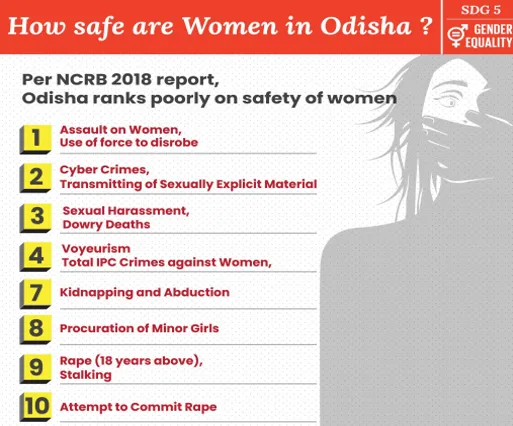GS Paper – I Salient features of Indian Society, Role of women, Social Empowerment Context: This post on witch-hunting in India draws insights from the article “Why Accusations of Witchcraft Persist in India,” featured in The Indian Express on August 8, 2024. |
Since 1953, the National Crime Records Bureau (NCRB) in India has tracked “motives for murder,” including witchcraft. In 2022, there were 85 murders motivated by witchcraft, mostly in Chhattisgarh, Madhya Pradesh, Jharkhand, and Odisha, with some cases also reported in Assam, Bihar, and Telangana.
In 2021, the UN Human Rights Council passed a resolution to eradicate harmful practices related to witchcraft accusations and ritual attacks. According to UN data, approximately 20,000 cases of such practices were recorded across 60 countries between 2009 and 2019.
In the Harry Potter series, Albus Dumbledore is revered as one of the greatest wizards of his time, guiding Harry through the challenges posed by dark magic.
These associations of men commencing magical power in our country are often referred to as wizards but the same connotation turns in a bad light when it is associated with women as they are branded as witches. These tags have a huge impact on women’s mental health and it leads to their Ostracisation from society and the discrimination they face. This is pointed out as a failure of us in society and also the abdication of law.
What is Witch Hunting?
Witch hunting is the practice of labelling individuals, particularly women, as witches, accusing them of using supernatural powers to harm others. These victims endure various forms of brutal torture, such as beatings, burns, being paraded naked through the village, forced to eat human excrement, and sometimes even rape. In some instances, their hair is cut off, and they, along with their children, are socially ostracized or even killed.
The issue of witch-hunting :
The number of states that accounted for more than 20 murders or culpable homicides which have been caused by witchcraft.
What are the factors driving the social issue?
- The root of this issue lies in the patriarchy and misogyny which still prevails in our society.
Patriarchy – Patriarchy is a social system in which men hold primary power and authority over political, economic, and social institutions.
Misogyny – Misogyny is the dislike, contempt, or prejudice against women and girls. It can manifest in various forms, including discriminatory practices, negative stereotypes, verbal and physical abuse, and systemic inequalities that undermine women’s rights and opportunities.
Historical Hindu practices like Sati Pratha where a widow would burn herself on her husband’s funeral pyre or be forced to do so. It was believed that this act would bring her and her family honour.
Stri Purush Tulana, a book written by Tarabai Shinde protested against patriarchy and the caste system. She was a member of the Satyashodhak Samaj and was also an associate of Savitribai Phule. The literary work critiques patriarchy as well as the gender and caste system in 19th-century India. It is also regarded as India’s first modern feminist text. Shinde challenges the status of women in society and their rights. The legalisation of widow remarriage in 1856 is considered a logical step because women who refused to perform Sati faced severe social stigma and repercussions in a society that upheld the practice. They were branded as witches and ostracised from the family and society.
- Existence of Social Stigma in Tribal Practices : A mix of superstitious beliefs, religious practices, and patriarchal norms which has been passed from one generation to another in tribal societies mostly due to social exclusion leads to women being accused of witchcraft.
- Illiteracy: Education is still not penetrated to rural lands and the tribal lands of our country which is also highlighted by the state commission for the women in Odisha Report 2021
- Weaker Socio-Economic conditions : Once BR Ambedkar said, ‘Caste System is not merely a division of labour. It is also a division of labourers. Certain caste and tribal societies low in strata follow these practices to maintain their hierarchy position in the society.
- Economical intent: Monetary motivation, personal grudges, lack of accessibility and loopholes in administrative functioning add fuel to this evil practice
- Issues in existing laws : Lack of conviction in such cases despite the Assam Witch Hunting Act (Prohibition, Prevention and Protection) which came into force in 2018.
What legislative measures have been taken to combat witch-hunting?
India has implemented several state-specific laws to address this issue:
- Bihar: Prevention of Witch Practices Act (1993)
- Jharkhand: Prevention of Witch Practices Act (2001)
- Chhattisgarh: Tonahi Pratadna Nivaran Act (2005)
- Odisha: Prevention of Witch Hunting Act (2013), among others.
Internationally, UNHRC has Adopted Resolution on the Elimination of “Harmful practices related to accusations of Witchcraft & Ritual attacks” (HAPWR)
How does it impact women?
- Physical violence, mental harassment and threat to life that they face disturb their physical and mental stability.
- Social ostracisation leads to deterioration of mental health that ultimately leads to suicides and anxiety disorders.
- Violation of Article 19 and Article 21. Their Right to adequate livelihood and right to freedom of speech and expression is curtailed.
- Terrorising of community.
Way forward :
- Formulation of specific centralised legislation to address the issue.
- The NCRB should revise its reporting to create distinct categories for these issues instead of merely classifying them as murders motivated by witchcraft.
- Promotion of education among women to develop scientific temper.
- Social Awareness Programmes should be conducted to promote literacy, and to aware people about superstitions.
- The issue could be incorporated into the school curriculum to raise awareness and shift societal perspectives regarding superstition.
Explore our courses: https://apnipathshala.com/courses/
Explore Our test Series: https://tests.apnipathshala.com/










